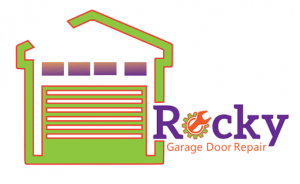The Ultimate Guide to Garage Door Broken Spring Replacement

Garage door springs are a major part of a garage door system and ensure the safe and reliable function of the garage door system. It plays a pivotal role in boosting the performance of the system. As a result, most homeowners need to learn how they work, why they break, and their solutions. We have aligned all these and completed the garage door broken spring replacement process in a detailed manner in this blog. Let’s dive in.
What are garage door springs?
Garage door springs are considered the most important components of garage door systems that support and strengthen the system’s internal structure and hold tension between the bearings.
Different types of springs
There are different types of garage door springs listed below:
- Extension springs
- Torsion springs
Extension Springs
These springs are mounted on each side of the garage door system and would last long, up to 10k cycles. Extension springs generate energy by stretching and contracting as the door opens and closes. When a garage door is closed, an extension spring is nearly double its normal length! An extension spring’s coils will eventually become permanently stretched, necessitating garage door spring replacement.
Torsion Springs
Torsion springs are essential and work with bearing plates interlinked with the garage door frame and cables at each end of the garage door system. Then, the springs create a space as they unwind and wind during pull-up and down. This process takes up the pressure off the garage door opener & enhances the opener’s longevity. Thus, torsion springs generally last up to 15-20,000 cycles.
Why do your garage door springs break?
Three major consequences arise: garage door springs break problems and reduce a garage door system’s overall efficiency and performance. Here’s why your garage door springs break-
- General wear and tear
- Rust and corrosion
- Poor maintenance
You must consider regular maintenance to deal with this error, as it keeps all your costly repairs away.
Basic Guidelines to Measure Your Garage Door Spring Performance
- Below average
The lifespan of springs lasts up to 6 years.
- Average
Garage Door Springs lasts up to 8 years.
- Above average
Springs last up to 10 years
- Superb performance
Springs last up to 10+ years
Warning signs you need garage door spring replacement
If your garage door spring makes a noisy sound, you most likely need garage door spring services from a reputed company. A broken spring in a garage door is the most obvious sign. Some other red flags are less considered, but if you notice numerous signs within your garage door system, contact your local garage door repair company in Denver (Rocky Garage Door) as your replacement.
- There is a 3-4″ space between the coils of the garage door spring.
- Your garage door spring has grown in length.
- Your garage door is not functioning.
- Your garage door opens at a 45-degree angle.
- Your garage door opens halfway before stopping.
- Your garage door tries to open before slamming shut.
- You see sagging or broken garage door cables.
If you want complete and satisfactory spring replacement solutions, look no further and avail yourself of garage door broken spring replacement services.
Tips to replace your garage door springs
Perform the following steps to diagnose garage door spring repair error:
- Unlink the torsion springs
Once the entire torque has been released, unbolt the torsion springs from the center mounting bracket with an open-end or adjustable wrench. Slide the springs towards the end of the torsion bars.
- Disconnect lift cables
Disconnect the entire system of the garage door, including lift cables.
- Install new springs
Slide the new springs onto the torsion bar, ensuring the “right hand” and “left hand” springs are on the correct sides. Bolt the stationary mounting cones of the springs onto the center mounting bracket in the same manner that the old springs were attached.
- Re-attach lift cables
Re-attach all the components and lift cables carefully and brackets at the bottom of the door.
- Load the springs
Now comes the difficult part. Begin twisting the winding cone and torsion spring with two winding bars to “load” them. Follow the manufacturer’s instructions for the number of twists needed to fully tighten the spring, which should be about 30 and 36 one-quarter twists. You will be twisting the spring higher.
- Anchor down the springs
After the spring has been properly loaded, use a hammer to shove the winding cone down the torsion bar about 1/4-inch—this will slightly prolong the spring.
- Finish Installation
Oil the springs with a garage door spray lubricant. Remove all clamps, connect the garage door opener, and test the door’s performance many times. If the door does not stay fully open on its own, the springs may need to be wound again or unwound if it does not close completely.
Final Thoughts
Garage door springs may face wear and tear after regular usage, but if you have proper maintenance tips, you can easily conquer things and keep your garage door springs properly working. In case you want complete broken garage door spring replacement services, feel free to connect with the professionals of Rocky Garage Door Repair Denver.

